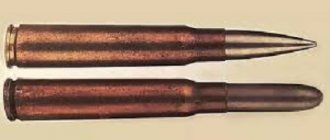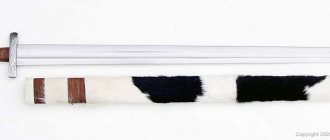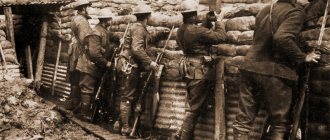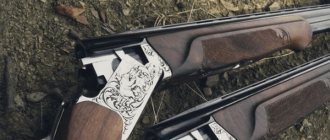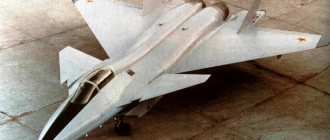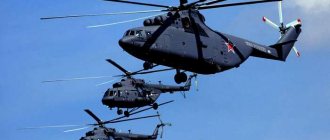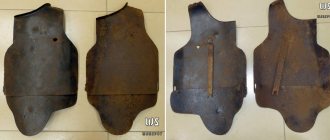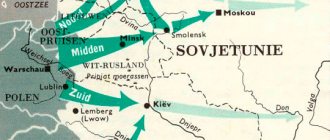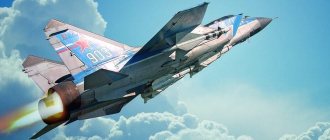Su-7 Dimensions. Engine. Weight. Story. Range of flight. Service ceiling
After four years of closure (from 1949 to 1953), OKB P.O. Sukhoi resumed its activities. And immediately from the chief designer P.O. Sukhoi produced two supersonic fighter designs: a front-line fighter with a swept wing and an interceptor with a delta wing. Since the swept wing by that time was better studied than the delta wing, in a relatively short time the brigade P.O. Sukhoi released working drawings of the Strela (S-1), which showed a long spindle-shaped fuselage, rapidly folded wings, and an unusually high landing gear.
Operators[edit]
Su-7 military operators
| Blue = Current | Dark red = former |
Current operators[edit]
North Korea
- North Korean Air Force - in 1971 received at least 28 Su-7BMK / -7UMK. The order for the aircraft was made in 1969.
Former operators[edit]
Afghanistan
- Afghan Air Force - 24 Su-7BMKs and 16 Su-7U trainers have been delivered to Afghanistan since 1972. Constant combat, high accident rates at high altitudes and poor maintenance led to significant wear and tear. A further 79 used replacements from Soviet stocks were delivered during the 1980s. No one is left in service.
Algeria
- Algerian Air Force - 20 Su-7BMK and 8 Su-7UM.
Czechoslovakia
- Czechoslovak Air Force - The Czechoslovak Air Force was the first foreign operator of the Su-7 in 1963. In total there were 64 Su-7BM, 31 Su-7BKL and Su-7U. During operation, 30 aircraft were lost in accidents. The remaining aircraft were withdrawn from service in 1990.
Egypt
- Egyptian Air Force - The first batch of 14 Su-7BMKs was destroyed during the Six-Day War. In 1967–1972 Egypt received an additional 185 Su-7BMK/SU-7UMK. Those who survived the October War with Israel were retired in the mid-1980s.
India
Sukhoi Su-7 of the Indian Air Force preserved in the museum of the Indian Air Force Academy
- Indian Air Force - 140 delivered in 1968, equipped with six squadrons. A further 14 attrition replacements were provided. The last units were decommissioned in 1986. [9]
Iraq
- Iraqi Air Force - Iraq received 18 Su-7BKLs in 1968, with another 83 delivered subsequently. No longer in use
Poland
- Polish Air Force - from July 1964 to June 1990 operated 6 Su-7BM, 33 Su-7BKŁ and 8 Su-7U; no longer in service.
Soviet Union
- Soviet Air Force
Syria
- Syrian Air Force. Shortly after the Six-Day War of 1967, Syria received 25 Su-7s. In the October War of 1973, Syria lost most of its aircraft. After 1973, the Soviet Union added 35 more aircraft to Syria. By the mid-80s, the Su-7s were transferred to reserve, and by the 90s they were written off.
Su-7 fighter - video
Already in January 1954, a mock-up of the S-1 was made. After its acceptance by the commission, production of the first prototype aircraft began. September 7, 1955 test pilot A.G. Kochetkov lifted the S-1 into the air. In the spring of 1956, test pilot V.N. For the first time in the USSR, Makhalin reached a speed of 2170 km/h, and he once landed with the engine stopped. On the second copy of the S-1, test pilot N. Korovushkin rose to a height of 19,000 m. Soon mass production of fighters began.
In the mid-1950s. The Soviet Air Force demanded the creation of a fighter-bomber. Given the limited “range” of vehicles available at that time, only the Su-7 could be the first candidate for such a role. In March 1956, a government decree was issued on the development of a fighter-bomber based on the Su-7. A prototype S-22-1 with a modernized AL-7F-1 engine was built on the basis of one of the first production Su-7s by February 1959. The weapon system and air intake of the aircraft were seriously modified, the nose of the fuselage was lengthened with anti-surge doors installed. To increase the flight range, the internal fuel supply was increased, and the suspension of two fuel tanks (PTB) was also provided. First flight of the experimental S-22 by OKB test pilot E.S. Solovyov completed it on April 24, 1959. The factory testing phase was completed by the fall. Due to the great interest of the customer, the tests were carried out very quickly. Having completed the program, the aircraft was recommended for adoption.
Serial production of the aircraft, which received the official designation Su-7B, began in Komsomolsk-on-Amur in 1960 (more correctly, it continued, since modifications were minimal). The first Su-7Bs entered service with Air Force units stationed in the European part of the USSR. On July 9, 1961, during the air parade in Tushino, production vehicles were demonstrated in the air. With the growth of the aircraft fleet, the accident rate curve quickly crept up. A difficult period began for the army to master the vehicle. At first, more than half of the flight accidents with the Su-7B were due to design and manufacturing defects (half were due to engine failures).
In accordance with the government decree of 1960, work began on installing powder accelerators and a more efficient parachute braking system on the Su-7B. The aircraft underwent a full cycle of testing on unpaved runways in a variety of seasonal conditions and climatic zones of the country, showing excellent takeoff and landing characteristics. Unfortunately, during testing on April 18, 1964, OKB test pilot A.A. died due to a malfunction of the powder accelerator. Koznov. The Su-7 aircraft was in service not only in the USSR, but also in many foreign countries. It was used in all Arab-Israeli conflicts, where it proved to be a fairly powerful and survivable aircraft.
Su-7 modifications
Su-7 is the first production modification of the fighter-bomber;
Su-7B, BC, BL, BM - fighter-bomber;
Su-7UBL - two-seat combat training fighter;
Su-7BKL is a fighter-bomber on a ski chassis.
Content
- 1 Design and development 1.1 Original Su-7 fighters
- 1.2 Su-7B fighter-bomber
- 1.3 Su-7A fighter
- 1.4 Su-7B fighter-bomber
- 2.1 Egypt
- 3.1 OKB-51 designations
- 4.1 Current operators
- 7.1 Notes
Performance characteristics of the Su-7 B
— First flight: September 7, 1955 — Start of operation: 1960 — End of operation: 1986 (USSR) — Units produced: 1,848
Su-7 crew
— 1 pilot
Dimensions of the Su-7
— Length: 16.607 m — Wing span: 9.31 m — Height: 4.157 m — Wing area: 34 m² — Leading edge sweep angle: 63°
Su-7 weight
— Empty weight: 8370 kg — Normal take-off weight: 11,983 kg — Maximum take-off weight: 13,043 kg — Fuel weight in internal tanks: 2760 kg
Su-7 engine
— 1 × TRDF AL-7F-1 — Afterburning thrust: 1 × 6800 kgf — Afterburning thrust: 1 × 9600 kgf
Su-7 speed
— Maximum speed: 2120 km/h — Cruising speed: 786 km/h — Climb rate: 9600 m/min — Takeoff length: 1350 m — Run length: 900 m
Su-7 flight range
— 1130 km without PTB
Su-7 service ceiling
— 15,000 m
Armament of the Su-7
— Small arms and cannon: 2 x NR-30 (70 rounds per gun) — Hardpoints: 6 — Combat load: 2000 kg — Unguided missiles: S-3K or S-5 or S-24 — Bombs: 2 x 500 kg or 4 x 250 kg or one RDS-4 - Suspended gun containers: UPK-23-250 with a GSh-23L cannon and 250 rounds of ammunition
History of operations[edit]
Egypt [edit]
An Egyptian Su-7BMK is on display at the Egyptian War Museum in the Cairo Citadel.
The Su-7 saw action with Egypt in the 1967 Six-Day War, the subsequent War of Attrition, and was used by the Egyptians in the Yom Kippur War to attack Israeli ground forces.
India[edit]
The Indian Air Force (IAF) used the Su-7 extensively in the 1971 war with Pakistan. Six squadrons, numbering 140 aircraft, flew nearly 1,500 offensive sorties during the war [4] and carried out the bulk of daylight attacks. The IAF has managed to maintain a very high operational tempo with its Su-7s, achieving a maximum sortie rate of six sorties per pilot per day. [4] Fourteen Su-7s were lost during the war, mostly due to anti-aircraft fire. [4] After the war, it turned out that the aircraft had high survivability and could fly home safely, despite serious damage. For example, Wing Commander HS Mangat's Su-7 was severely damaged by a Sidewinder missile fired from a Pakistani Air Force J-6. The impact was so severe that half the rudder was missing, the elevators, ailerons and flaps were severely damaged, and half the missile stuck in gutter pipe [ explanation required
] . [4] The pilot returned to his base. The death of at least one Indian pilot can be attributed, at least indirectly, to poor cockpit design. The pilot set his seat in a dangerous position "because he found the bomb sight and front sight easier to operate" while in that position, and was killed during the ejection. [6]
The Indian Su-7BMK shot down at least two Shenyang J-6s in the 1971 war. [4] If 3 Su-7 J-6 are lost [7]
Third generation: all-weather Su-24
The third generation is represented by the Su-24, an all-weather front-line bomber with a variable-sweep wing. This aircraft is still successfully operated by the Russian Aerospace Forces 26 years after its production ended.
Designers of the Sukhoi Design Bureau have created a powerful twin-engine supersonic missile-carrying bomber with a variable-sweep wing. On board the aircraft was the latest sighting and navigation system for that time, “Puma,” which included an on-board digital computer (onboard digital computer). A distinctive feature of the vehicle was also a wide range of weapons, which included both guided and unguided weapons. The Su-24 became the first tactical aviation strike aircraft in the USSR, which could be used at any time of the day or night and in any weather conditions.
Su-24 aircraft
In 1983, the modernized Su-24M was put into service. By the way, almost half of the combat missions were carried out on this vehicle during the Russian military operation in Syria.
First generation: number one with the initials "Su"
In 1936, a competition was announced in the country to create a bomber under the code name “Ivanov”. The winner was the project of Pavel Sukhoi. Work on the Ivanov ended with the appearance of the first aircraft with the initials “Su” - the Su-2 combat multi-role bomber (originally BB-1, “short-range bomber”). The aircraft was built in large series from 1940 to 1942, and a total of about 900 aircraft were produced.
Su-2 aircraft
Almost every Sukhoi car can be repaired. The first production aircraft, the Su-2, was no exception and provided military pilots with amazing comfort for those times: a spacious and warm cabin, even in cold weather, with good visibility for the pilot and navigator. A huge advantage in battle was the ability to control the vehicle from the navigator's cockpit.
Su-2 aircraft heroically fought in air battles of the Great Patriotic War and defended the skies of Stalingrad. They were used in the role of short-range bombers, reconnaissance aircraft and spotters. Another important task was solved by the Su-2 crews: we are talking about dropping leaflets in Russian and German over enemy-occupied territory. In just one month, up to 45 thousand leaflets were dropped from airplanes. They instilled hope in millions of people in occupied cities, talking about the great losses of fascist troops and reporting the beginning of Allied air raids on German cities.
Links[edit]
Notes[edit]
- ^ abc In Soviet terminology, a front-line
(
frontline fighter
, front-line fighter; also called
a front-line
or
tactical
fighter) is a fighter aircraft that is designed for operational deployment to the fronts for use over the battlefield, as opposed to interceptor aircraft. deployed by the Soviet Air Defense Forces.
Quotes [edit]
- Jump up
↑ Wheeler 1992, p. 143. - ^ abcdefg "Sukhoi Su-7". Archived June 7, 2009 at
Wayback Machine
Museum .
Date accessed: January 28, 2011 - ^ abcde Green, William and Gordon Swanborough. The Great Book of Fighters.
St. Paul, MN: MBI Publishing, 2001. ISBN 0-7603-1194-3. - ^ abcde e Rakshak, Bharat. "Fighter Whale: Su-7 in Air Force Service." Archived December 30, 2009,
at the Wayback Machine
bharat-rakshak.com.
Access date: January 28, 2011. - Nijboer and Patterson 2003, pp. 174-177.
- Dixit, Mohan B. "For Err is the Human Reports of the Crash of Two Military Aircraft." SQU Med J,
Volume 10, Issue 1, 2010, pp. 120–125. - https://www.defencejournal.com/2002/may/salute.htm
- ^ abcde Goebel, Greg. "Sukhoi Su-7". Aviation Vectors,
August 1, 2009. Accessed January 28, 2011. - Rakshak, Bharat. "Su-7". Archived December 30, 2009, at the IAF History Wayback Machine.
Received; January 28, 2011 - Gladniker, David. "An Incomplete Guide to Using an Airfoil". m-selig.ae.illinois.edu
. Retrieved April 16, 2022. - www.3ebra.com, Zebra IT Bureau -. "Sukhoi Company (JSC) - Aircraft - Museum - Su-7 - Technical characteristics". www.sukhoi.org
. Archived from the original on 2017-09-25. Retrieved September 25, 2022.
Bibliography[edit]
- Nijboer, Donald, and Dan Patterson. Cockpits from the Cold War.
Eden Prairie, Ontario: The Boston Mills Press, 2003. ISBN 1-55046-405-1. - Wheeler, Barry K. Hamlyn's Guide to Military Aircraft Markings.
London: Chancellor Press, 1992. ISBN 1-85152-582-3. - Pushpindar Singh Chopra "The Fighter Whale" (1983)
Fourth generation: Su-27 aerobatics master
The highly maneuverable Su-27 fighter, which first took off in 1977, is rightfully recognized as one of the best domestic combat aircraft. This fourth generation fighter has become the hallmark of the Russian Air Force.
The Su-27 was officially accepted into service on August 23, 1990. By that time, the “twenty-seventh” had already managed to set a number of world records for rate of climb. In particular, in 1986, test pilot Viktor Pugachev reached an altitude of 3000 meters in just 25.4 seconds.
Literally three years later, Viktor Pugachev again surprised the whole world. In June 1989, at the Le Bourget air show, he staged the most spectacular foreign premiere of the Su-27, demonstrating a new aerobatics maneuver, which was nicknamed in his honor - “Pugachev’s Cobra.” Aerobatics performed on the Su-27 continue to amaze spectators at prestigious air shows around the world. Since 1991, pilots of the Russian Air Force aerobatic team “Russian Knights” have performed on Su-27 fighters.
Su-27 aircraft
The high maneuverability of the Su-27 was made possible thanks, among other things, to the new fly-by-wire control system (EDCS). Its presence, by the way, is considered one of the main differences between fourth-generation machines.
The high flight characteristics of the “twenty-seventh” are largely due to the use of new generation AL-31F engines designed by the Design Bureau named after. Cradles. This engine is still considered one of the best in the world for front-line aircraft. It is installed not only on the Su-27, but also on its modifications, Su-33 carrier-based fighters, Su-30MK fighters, and Su-34 front-line bombers.
Fifth generation: the future of Su-57 combat aviation
The main difference of the fifth generation is the use of stealth technology, supersonic cruising speed, and more advanced avionics.
The first tests of the Russian advanced front-line aviation complex (PAK FA) began in 2010. Until August 2022, the aircraft was known under the factory designation T-50, then it received the name Su-57.
Most of the characteristics of the Su-57 are classified, but it is already known that it is equipped with a fundamentally new set of integrated avionics that provides intelligent support for the crew. The radar system of the Su-57 differs from a conventional aircraft airborne radar. The fighter is equipped with a radar station with AFAR (active phased array antenna).
Su-57 aircraft
The first flight of the Russian fifth-generation fighter took place on January 29, 2010. Since then, several hundred test flights have been successfully carried out. To date, ten flight prototypes have been created.
In 2022, a contract was signed with the Russian Ministry of Defense for the supply of an initial batch of Su-57 aircraft to the troops. And in May of this year, Vladimir Putin announced the purchase by the Ministry of Defense of 76 Su-57 fighters, which should enter service with three aviation regiments by 2028. This contract may become a record in the history of the United Aircraft Corporation (UAC).
